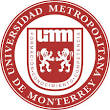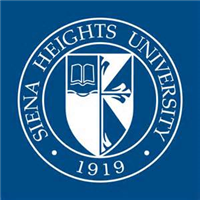What do they do?
Perform therapeutic massages of soft tissues and joints. May assist in the assessment of range of motion and muscle strength, or propose client therapy plans.
Also known as:
Bodywork Therapist, Certified Massage Therapist (CMT), Clinical Massage Therapist, Integrated Deep Tissue Massage Therapist, Licensed Massage Practitioner (LMP), Licensed Massage Therapist (LMT), Massage Therapist, Medical Massage Therapist, Registered Massage Therapist (RMT), Soft Tissue Specialist, Therapeutic Massage Technician
-
16.7%
Change
Ranks #49 in job growth rate500Job Openings
Ranks #20 in net job growth
-
Dayton School of Medical Massage
Dayton, OH
-
National Holistic Institute
Emeryville, CA
-
Healing Hands School of Holistic Health
Escondido, CA
-
WellSpring School of Allied Health-Kansas City
Kansas City, MO
-
Healing Mountain Massage School
Salt Lake City, UT
Looking for colleges that offer a specific major? Use the College Match Tool to find your best-matched schools and discover your estimated Net Price!
- Doctorate or Professional Degree (2%)
- Master's degree (4%)
- Bachelor's degree (20%)
- Associate's degree (19%)
- Some college, no degree (31%)
- High school diploma equivalent (20%)
- Less than high school diploma (3%)
People in this career often have these skills:
- Active Listening - Giving full attention to what other people are saying, taking time to understand the points being made, asking questions as appropriate, and not interrupting at inappropriate times.
- Speaking - Talking to others to convey information effectively.
People in this career often know a lot about:
- Customer and Personal Service - Knowledge of principles and processes for providing customer and personal services. This includes customer needs assessment, meeting quality standards for services, and evaluation of customer satisfaction.
- Biology - Knowledge of plant and animal organisms, their tissues, cells, functions, interdependencies, and interactions with each other and the environment.
- English Language - Knowledge of the structure and content of the English language including the meaning and spelling of words, rules of composition, and grammar.
People in this career often have talent in:
- Dynamic Strength - The ability to exert muscle force repeatedly or continuously over time. This involves muscular endurance and resistance to muscle fatigue.
- Trunk Strength - The ability to use your abdominal and lower back muscles to support part of the body repeatedly or continuously over time without "giving out" or fatiguing.
- Oral Comprehension - The ability to listen to and understand information and ideas presented through spoken words and sentences.
- Oral Expression - The ability to communicate information and ideas in speaking so others will understand.
- Manual Dexterity - The ability to quickly move your hand, your hand together with your arm, or your two hands to grasp, manipulate, or assemble objects.
- Problem Sensitivity - The ability to tell when something is wrong or is likely to go wrong. It does not involve solving the problem, only recognizing that there is a problem.
- Multilimb Coordination - The ability to coordinate two or more limbs (for example, two arms, two legs, or one leg and one arm) while sitting, standing, or lying down. It does not involve performing the activities while the whole body is in motion.
People in this career often do these activities:
- Interview patients to gather medical information.
- Administer therapy treatments to patients using hands or physical treatment aids.
- Clean facilities or equipment.
- Stock supplies or merchandise.
- Develop patient therapy programs.
- Maintain medical records.
- Assess physical conditions of patients to aid in diagnosis or treatment.
- Teach medical procedures or medical equipment use to patients.
- Confer with other professionals to plan patient care.
This page includes data from:

 Occupation statistics: USDOL U.S. Bureau of Labor Statistics Occupational Employment Statistics
Occupation statistics: USDOL U.S. Bureau of Labor Statistics Occupational Employment Statistics









